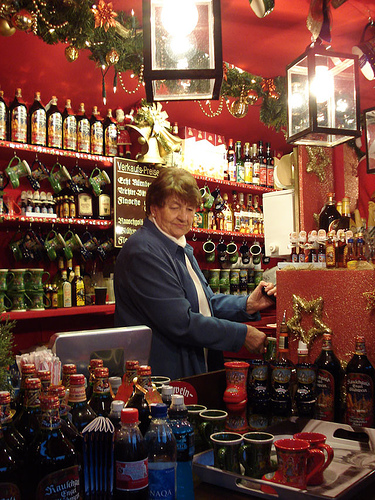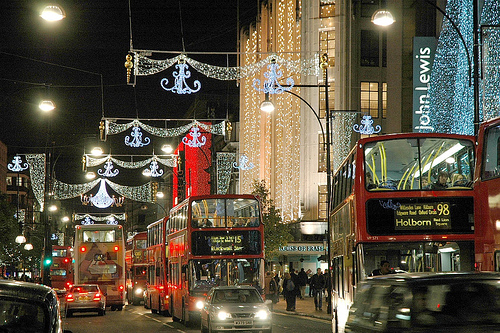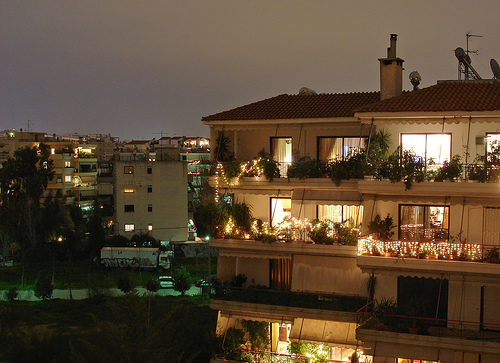Christmas Customs in Western Europe
Italy
Christmas is celebrated in Italy from December 24, Christmas Eve, to January 6, Epiphany. It used to be that Epiphany was the main day when Italians would give presents, but Christmas day is becoming more common. La Befana brings these presents and fills children’s Christmas stockings. Lights and Nativity scenes, or presepe, are displayed all throughout the country. On Christmas Eve, families usually unite and eat a meatless dinner, and go to Midnight Mass later on. Southern Italians eat a seven fishes dinner before attending Mass. Bonfires are usually lit in the center of town, especially in the mountain regions. On Christmas Day, Italians indulge in meat dinner.

Germany
Around Christmas seasons, Germans enjoy the hearty alcoholic beverage of Glühwein, which is a hot wine spiced with cinnamon, cloves and sugar. It is much better than eggnog. They sell Glühwein on the streets and in German Christmas markets, as there aren’t laws against drinking on the streets there. Germans also like making this beverage at home. They also eat Stollen, which is a fruitcake that originated in Dresden, Germany. Many Germans start celebrating Christmas season four weeks before Christmas Day, lighting a candle on the Christmas wreath every Sunday.
The illuminated Christmas tree is actually a German tradition, dating back to the 16th century. According to legend, Martin Luther, the founder of Protestantism, was the first to put the candles on the Christmas trees, which used to be decorated with fruits and nuts.
On Christmas Eve, Germans go home from work early and light up their trees, open presents. Some go to Midnight Mass. On December 25 and 26, all shops are closed, and Germans stay home with their families and relax.
France
Most people in France celebrate Christmas on December 25, but certain Saints Days differ by region. Rather than Christmas stockings, French children put their little shoes in front of the fireplace, so that Père Noël will fill them with gifts. On Christmas Eve, families decorate their Christmas trees with fruit, nuts and little toys. Traditionally, the French go to Midnight Mass, but this is declining. Mass is followed by a big family feast, called Le Réveillon. Some French people have this meal at home, others at a cafe. After the meal, it is traditional to light a candle for the Virgin Mary to walk by. The food differs depending on the region of France, but traditional dishes often include turkey, chicken, goose and white pudding. There are also some traditional French pastries around Christmas season, such as le pain calendeau.
UK
A traditional Christmas decoration in the UK is the wreath, bearing three pink candles, one white one and one purple one. Christmas trees are also essential. Christmas dinner is served the middle of Christmas day, and includes turkey, vegetables and sauces. Dessert consists of fruity pudding and brandy sauce. Children think of Father Christmas giving them presents. British people like to put up decorations all over town. People go to either Midnight Mass, or service on Christmas morning.
In Scotland, people traditionally burn branches from rowan trees during Christmas Eve, commemorating Yule Tide. Some traditional foods include Black Buns, which are made from fruits, almonds, spices and whiskey, and Bannock Cakes, which are made out of oatmeal. For dinner, they eat mince pies and spiced roasted duck.
Ireland
Irish Christmas is a religious holiday that lasts from December 24-January 6. On Christmas Eve, Irish people often light up red candles on the window sill, to provide light for Joseph and Mary. Women bake seed cakes for everyone in the house, and make puddings. Children often leave out Christmas sacks for gifts, rather than stockings. They leave out Guiness and mince pies for Santa at night.
Greece
Greek Christmas season goes on from December 6, the St Nicolas Day, through January 6th. Christmas is considered to be a religious holiday, and the Christ aspect is emphasized. There are Greek Christmas elves, called Kallikantzari, that go around and pester people from Christmas through Epiphany. Some families keep a log burning in their homes to scare away these evil spirits, and decorate fire places with hyssop, thistle and asparagus.
Spain
Spanish Christmas season lasts from mid-December through January 6. On Christmas Eve, Spanish people light tiny oil lamps, attend Midnight Mass, and eat Christmas dinner. After that, people go to the streets for dancing celebrations. They have a special Christmas dance called the Jota. Gifts are usually givem on January 6th, and children think of the Three Wise Men instead of a Santa figure. They fill their shoes with straw and barley for their traveling camels, who exchange that for presents. Spanish people eat turron, an almond candy, and rejoice around their nativity scenes on Christmas Eve. Christmas is a religious holiday in Spain.
Feliz Navidad!







The Spanish main Christmas meal is typically a meal of exotic seafood, followed by turron, nuts and fruit. Another part of tradition is the belen, a model of the nativity scene, maybe with some local influences, usually on display to the public in the main plaza.